National Parks in Hungary
There are 10 national parks in Hungary. These are their logos:
-
Ferto-Hanság National Park
- Orség National Park
- Balaton-Uplands National Park
- Duna-Dráva National Park
- Kiskunság National Park
- Duna-Ipoly National Park
- Bükk National Park
- Aggtelek National Park
- Hortobágy National Park
- Körös-Maros National Park
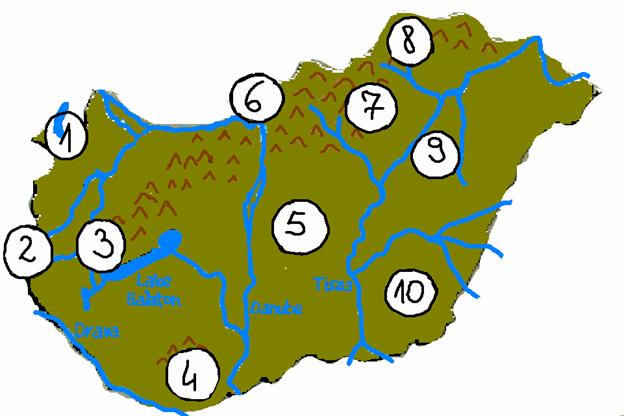
Balaton Uplands National Park
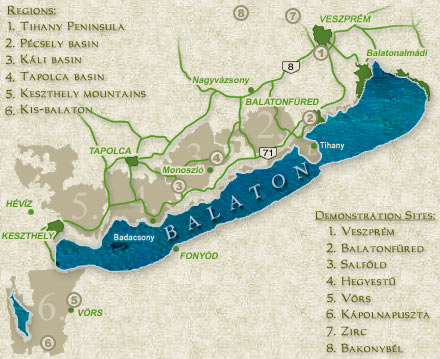 The park is located about 40 km from Zalaegerszeg, to the north of Lake Balaton, the largest (more than 70 km long) freshwater lake of Central Europe.
The park is located about 40 km from Zalaegerszeg, to the north of Lake Balaton, the largest (more than 70 km long) freshwater lake of Central Europe.
The basalt mountains of the area are not only unique and picturesque geological relics, they are also the habitat of many rare plants and animals. In addition to the natural values it is worth to mention the vineyards, the architectural relics of the hills and villages, ruins of castles, churches and palaces.
The monadnocks are peculiarly shaped results of the volcanic activity towards the end of the Pannonian Age. At the edges of the Csobánc, Szentgyörgy and Badacsony Hills, which from a distance resemble coffins, typical formations of solidifying basalt can be seen. At the slopes of Badacsony, huge rock-glaciers and block fields are to be found, where the large-leaf linden and the mahaleb cherry forest can just establish themselves. The picturesque cones of the Gulács, Tóti and Vár Hills resemble sugar loafs.
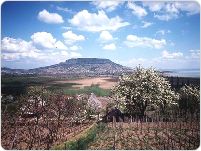 Several botanical rarities live in the extreme climatic and geological conditions of the basalt mountains. A unique acidophilic ash-beech forest occurs on the rocky escarpments of the Badacsony; in its beech forests we find cyclamen, while in the hornbeam-oak groves, hepatica, black bryony, broomrape grow. On the sunny rocks of the Szentgyörgy Hill a small population of Cheilanthes marantae (unique in Hungary) blooms, with caterack and Lumnitzer carnation. Several local subspecies of sorbtrees find habitat in the unavailable rock cracks. The flower stock of Csobánc is enriched by Pulsatilla grandis, Saxifraga and lilac. On the top of the Tóti Hill a picturesque flower field is situated: Orlaya grandiflora mixed with iris, Pulsatillas and Caryophyllaceae. In the cracks of the basalt columns the small scrubs of Cotoneaster matrensis line up.
Several botanical rarities live in the extreme climatic and geological conditions of the basalt mountains. A unique acidophilic ash-beech forest occurs on the rocky escarpments of the Badacsony; in its beech forests we find cyclamen, while in the hornbeam-oak groves, hepatica, black bryony, broomrape grow. On the sunny rocks of the Szentgyörgy Hill a small population of Cheilanthes marantae (unique in Hungary) blooms, with caterack and Lumnitzer carnation. Several local subspecies of sorbtrees find habitat in the unavailable rock cracks. The flower stock of Csobánc is enriched by Pulsatilla grandis, Saxifraga and lilac. On the top of the Tóti Hill a picturesque flower field is situated: Orlaya grandiflora mixed with iris, Pulsatillas and Caryophyllaceae. In the cracks of the basalt columns the small scrubs of Cotoneaster matrensis line up.
 At the eastern edge of the area on Permian sandstone the calluna provides a red flower carpet at the end of summer; on the rocks juniper and yellow hawkweed species bloom. On the plains, remains of ancient marshes contain several botanical rarities. At Raposka we find marsh gladiolus and orchids; next to Káptalantóti there is a habitat of the 1 m tall and odorous large pink (that occurs less and less), accompanied with the blue flowered marsh gentian.
At the eastern edge of the area on Permian sandstone the calluna provides a red flower carpet at the end of summer; on the rocks juniper and yellow hawkweed species bloom. On the plains, remains of ancient marshes contain several botanical rarities. At Raposka we find marsh gladiolus and orchids; next to Káptalantóti there is a habitat of the 1 m tall and odorous large pink (that occurs less and less), accompanied with the blue flowered marsh gentian.
On the rocks and in the forests of the basalt hills several rare birds nest: raven, red footed falcon, rock bird etc. In the reeds below the Szigliget Hill the protected greylag goose breeds.
Bükk National Park
 The Bükk National Park was established in 1977. It preserves the natural flora, fauna and the cultural values of the B�kk Mountains. The area of the park is 43,200 hectares from which 97 % is covered with forests.There are several unique and rare wildlife species in the mountains and more than 900 caves are known. In 1989 the UNESCO recorded Hollokö village, situated within the boundaries of the Hollokö Protected Landscape Area, among the World Heritage Sites.
The Bükk National Park was established in 1977. It preserves the natural flora, fauna and the cultural values of the B�kk Mountains. The area of the park is 43,200 hectares from which 97 % is covered with forests.There are several unique and rare wildlife species in the mountains and more than 900 caves are known. In 1989 the UNESCO recorded Hollokö village, situated within the boundaries of the Hollokö Protected Landscape Area, among the World Heritage Sites.
Örség National Park
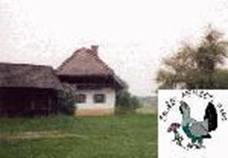 The newest Hungarian National Park, the Örség National Park, was established in 2002 and it is situated on 44,000 hectares. Its unique landscapes and cultural heritages are well known in Hungary. Villages kept their medieval forms and the so called “szeres” structure. The National Park also includes the hills of Koszeg and Ság Hill Nature Conservation Areas.
The newest Hungarian National Park, the Örség National Park, was established in 2002 and it is situated on 44,000 hectares. Its unique landscapes and cultural heritages are well known in Hungary. Villages kept their medieval forms and the so called “szeres” structure. The National Park also includes the hills of Koszeg and Ság Hill Nature Conservation Areas.
Duna-Ipoly National Park
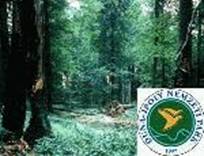 The Duna-Ipoly National Park, involving the wooded ranges along the Danube Bend and the relatively untouched part of the River Ipoly Valley, was established in 1997. Its total area covers 60,314 hectares. The uniqueness of the region derives from the interaction between three different main landscape forms such as river valleys, mountains, and the lowland.
The Duna-Ipoly National Park, involving the wooded ranges along the Danube Bend and the relatively untouched part of the River Ipoly Valley, was established in 1997. Its total area covers 60,314 hectares. The uniqueness of the region derives from the interaction between three different main landscape forms such as river valleys, mountains, and the lowland.
Duna-Dráva National Park
 The establishment of the Duna-Drava National Park had to be prepared for several years because it had originally aimed at being a cross-border national park with the former Yugoslavia. The national park was eventually established in 1996 only on the Hungarian side, with more than 49,000 hectares. It consists of large separate units along the Danube from the River Sió to the natural border and along the River Drava. The protected areas comprise a wide range of habitats from open water surfaces through various types of deciduous forests to dry rock grasslands and sandy grasslands.
The establishment of the Duna-Drava National Park had to be prepared for several years because it had originally aimed at being a cross-border national park with the former Yugoslavia. The national park was eventually established in 1996 only on the Hungarian side, with more than 49,000 hectares. It consists of large separate units along the Danube from the River Sió to the natural border and along the River Drava. The protected areas comprise a wide range of habitats from open water surfaces through various types of deciduous forests to dry rock grasslands and sandy grasslands.
Kiskunság National Park
 The Kiskunság National Park has approximately 284,165 acres of protected area. 123,550 acres of the total amount comprise the nine separated areas of it, eg.: the Upper-Kiskunság Plain (Puszta). This is a large saline lowland plain of the Great Hungarian Plain. It was the flood area of the River Danube with a calcareous-saline soil. It presents a nice variation of saline meadows, grazing lands, saline terraces with a typical vegetation consisting of various salt-resistant and halophyte species. The huge untouched land gives home to the largest and steadiest population of the great bustard (Otis) in Hungary and the typical ancient Hungarian domestic animals, the grey cattle and racka sheep live here.
The Kiskunság National Park has approximately 284,165 acres of protected area. 123,550 acres of the total amount comprise the nine separated areas of it, eg.: the Upper-Kiskunság Plain (Puszta). This is a large saline lowland plain of the Great Hungarian Plain. It was the flood area of the River Danube with a calcareous-saline soil. It presents a nice variation of saline meadows, grazing lands, saline terraces with a typical vegetation consisting of various salt-resistant and halophyte species. The huge untouched land gives home to the largest and steadiest population of the great bustard (Otis) in Hungary and the typical ancient Hungarian domestic animals, the grey cattle and racka sheep live here.
The F�löpháza Sand Dunes is one of the most interesting sand-dune areas in Central Europe. The rich variety of the surface was created by the predominant northwestern and southeastern winds. There are still a number of drifting sand dunes and some are covered with open sandy grasslands, and give home to ample insect population. In the eastern part of the area there used to be a number of sodic lakes that had been created by the wind, but they all dried out during the drought of the 1980’s.
Bugac is the largest separate area of the Kiskunság National Park. The amazing variety of different natural beauties and values include the highly protected Native Juniper Grove, sand dune forests and sand plains, marshes, bogs, boggy meadows, wet grasslands, sodic lakes and sodic plains. The sand-dune forests of junipers and poplars accommodate numerous rare species of plants and animals.
Körös-Maros National Park

The Körös-Maros National Park in the south-east of Hungary has a mosaic-like structure and it lies on 51121 hectars.
It has many colorful regions such as the Kis-Sárr�t swamp, Fáspuszta, Mágor-puszta, Kardoskúti Feh�rtó. In the territory of the park there are several unique and protected plant and animal species:
 The agárkosbor (Orchis morio) is a protected species of orchids. It lives on calcareous-sodic soils and meadows.
The agárkosbor (Orchis morio) is a protected species of orchids. It lives on calcareous-sodic soils and meadows.
 búbos banka - Hoopoe (Upupa epops) Reaching 30 centimetres (12 inches) in length, with a fan-shaped crest and black-and-white striped tail and wings, the hoopoe is easy to spot. This elaborately decorated bird is native to southern Europe, Asia, and Southern Africa. It spends its days probing the sioil for insects and grubs. Although timid, the hoopoe can elude most birds of prey.
búbos banka - Hoopoe (Upupa epops) Reaching 30 centimetres (12 inches) in length, with a fan-shaped crest and black-and-white striped tail and wings, the hoopoe is easy to spot. This elaborately decorated bird is native to southern Europe, Asia, and Southern Africa. It spends its days probing the sioil for insects and grubs. Although timid, the hoopoe can elude most birds of prey.
Hortobágy National Park

Hortobágy is the largest continuous natural grassland in Europe. It is located on the eastern part of the Hungarian Plains, the Alföld, and it was established in 1973 as the country’s largest protected area. Hortobágy has outstanding natural features, maintaining great biological diversity in respect of species and habitats. It is a unique example of the harmonious coexistence of people and nature based on the careful use of the land.
 A major part of the area of the National Park is formed by natural habitats: alkaline grasslands interrupted by marshes. There are artificial wetlands too, which cover a much smaller area. These are of considerable importance, because they are the fishponds. Artificial wetlands were created during the last century on the worst quality grazing-lands and marshes. The marshes and fishponds are bird nesting habitats and migration sites of European significance. One of the the most spectacular sights of the Park is the cranes' autumn migration.
A major part of the area of the National Park is formed by natural habitats: alkaline grasslands interrupted by marshes. There are artificial wetlands too, which cover a much smaller area. These are of considerable importance, because they are the fishponds. Artificial wetlands were created during the last century on the worst quality grazing-lands and marshes. The marshes and fishponds are bird nesting habitats and migration sites of European significance. One of the the most spectacular sights of the Park is the cranes' autumn migration.
Some famous Hungarian animal species also live here, such as the grey cattle...

...and the Racka (a kind of sheep that only lives in Hungary)

Fertö-Hanság National Park
 Lake Fertö is situated on the territory of Austria and Hungary. It is Europe's largest salt-water lake. It is fed mainly by two streams and rainwater, it has no natural drainage, so its water is drained off by the Hanság channel. The thick reed-beds and the marshy areas form a veritable bird paradise. The Fertö-Hanság National Park was established in 1979, and it is regarded as one of the internationally significant natural water areas of Europe.
Lake Fertö is situated on the territory of Austria and Hungary. It is Europe's largest salt-water lake. It is fed mainly by two streams and rainwater, it has no natural drainage, so its water is drained off by the Hanság channel. The thick reed-beds and the marshy areas form a veritable bird paradise. The Fertö-Hanság National Park was established in 1979, and it is regarded as one of the internationally significant natural water areas of Europe.
Aggtelek National Park
 The Aggtelek National Park in north-east Hungary was established in 1985 to protect natural treasures, surface formations and caves. Seventy-five percent of it is covered with deciduous forests and there are more than 200 karst caves of various sizes.
The Aggtelek National Park in north-east Hungary was established in 1985 to protect natural treasures, surface formations and caves. Seventy-five percent of it is covered with deciduous forests and there are more than 200 karst caves of various sizes.
Aggtelek and the Slovakian Karst form Central Europe’s largest cave system. The longest cave in the Karst area is the Baradla Cave, with a total length of 25 km passageways, from which 5.6 km lies in Slovakian territory and is known as the Domica. The start of its formation can be put at around 2 million years ago. The waters of the streams got into the system of cracks and slowly widened the crevicesand formed the present passages, by dissolving and eroding the limestone. The dripping water deposited its lime content, forming the stalactites and stalagmites. These formations inspired the imaginations of discoverers and visitors, who gave some of the formations special names like Dragon’s Head, Tiger, Mother in Law’s Tongue, the Hall of Columns and the Hall of Giants. Finds of the archaeological excavations have shown that the ancient man knew the cave, and even used Baradla as a place to live. The Baradla Cave’s Concert Hall is well-known for its various concerts and its wonderful acoustics.
crevicesand formed the present passages, by dissolving and eroding the limestone. The dripping water deposited its lime content, forming the stalactites and stalagmites. These formations inspired the imaginations of discoverers and visitors, who gave some of the formations special names like Dragon’s Head, Tiger, Mother in Law’s Tongue, the Hall of Columns and the Hall of Giants. Finds of the archaeological excavations have shown that the ancient man knew the cave, and even used Baradla as a place to live. The Baradla Cave’s Concert Hall is well-known for its various concerts and its wonderful acoustics.
Written by: Viki

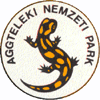
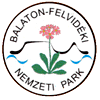



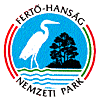

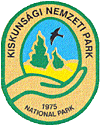



 The park is located about 40 km from Zalaegerszeg, to the north of Lake Balaton, the largest (more than 70 km long) freshwater lake of Central Europe.
The park is located about 40 km from Zalaegerszeg, to the north of Lake Balaton, the largest (more than 70 km long) freshwater lake of Central Europe. Several botanical rarities live in the extreme climatic and geological conditions of the basalt mountains. A unique acidophilic ash-beech forest occurs on the rocky escarpments of the Badacsony; in its beech forests we find cyclamen, while in the hornbeam-oak groves, hepatica, black bryony, broomrape grow. On the sunny rocks of the Szentgyörgy Hill a small population of Cheilanthes marantae (unique in Hungary) blooms, with caterack and Lumnitzer carnation. Several local subspecies of sorbtrees find habitat in the unavailable rock cracks. The flower stock of Csobánc is enriched by Pulsatilla grandis, Saxifraga and lilac. On the top of the Tóti Hill a picturesque flower field is situated: Orlaya grandiflora mixed with iris, Pulsatillas and Caryophyllaceae. In the cracks of the basalt columns the small scrubs of Cotoneaster matrensis line up.
Several botanical rarities live in the extreme climatic and geological conditions of the basalt mountains. A unique acidophilic ash-beech forest occurs on the rocky escarpments of the Badacsony; in its beech forests we find cyclamen, while in the hornbeam-oak groves, hepatica, black bryony, broomrape grow. On the sunny rocks of the Szentgyörgy Hill a small population of Cheilanthes marantae (unique in Hungary) blooms, with caterack and Lumnitzer carnation. Several local subspecies of sorbtrees find habitat in the unavailable rock cracks. The flower stock of Csobánc is enriched by Pulsatilla grandis, Saxifraga and lilac. On the top of the Tóti Hill a picturesque flower field is situated: Orlaya grandiflora mixed with iris, Pulsatillas and Caryophyllaceae. In the cracks of the basalt columns the small scrubs of Cotoneaster matrensis line up. At the eastern edge of the area on Permian sandstone the calluna provides a red flower carpet at the end of summer; on the rocks juniper and yellow hawkweed species bloom. On the plains, remains of ancient marshes contain several botanical rarities. At Raposka we find marsh gladiolus and orchids; next to Káptalantóti there is a habitat of the 1 m tall and odorous large pink (that occurs less and less), accompanied with the blue flowered marsh gentian.
At the eastern edge of the area on Permian sandstone the calluna provides a red flower carpet at the end of summer; on the rocks juniper and yellow hawkweed species bloom. On the plains, remains of ancient marshes contain several botanical rarities. At Raposka we find marsh gladiolus and orchids; next to Káptalantóti there is a habitat of the 1 m tall and odorous large pink (that occurs less and less), accompanied with the blue flowered marsh gentian. The Bükk National Park was established in 1977. It preserves the natural flora, fauna and the cultural values of the B�kk Mountains. The area of the park is 43,200 hectares from which 97 % is covered with forests.There are several unique and rare wildlife species in the mountains and more than 900 caves are known. In 1989 the UNESCO recorded Hollokö village, situated within the boundaries of the Hollokö Protected Landscape Area, among the World Heritage Sites.
The Bükk National Park was established in 1977. It preserves the natural flora, fauna and the cultural values of the B�kk Mountains. The area of the park is 43,200 hectares from which 97 % is covered with forests.There are several unique and rare wildlife species in the mountains and more than 900 caves are known. In 1989 the UNESCO recorded Hollokö village, situated within the boundaries of the Hollokö Protected Landscape Area, among the World Heritage Sites.  The newest Hungarian National Park, the Örség National Park, was established in 2002 and it is situated on 44,000 hectares. Its unique landscapes and cultural heritages are well known in Hungary. Villages kept their medieval forms and the so called “szeres” structure. The National Park also includes the hills of Koszeg and Ság Hill Nature Conservation Areas.
The newest Hungarian National Park, the Örség National Park, was established in 2002 and it is situated on 44,000 hectares. Its unique landscapes and cultural heritages are well known in Hungary. Villages kept their medieval forms and the so called “szeres” structure. The National Park also includes the hills of Koszeg and Ság Hill Nature Conservation Areas.  The Duna-Ipoly National Park, involving the wooded ranges along the Danube Bend and the relatively untouched part of the River Ipoly Valley, was established in 1997. Its total area covers 60,314 hectares. The uniqueness of the region derives from the interaction between three different main landscape forms such as river valleys, mountains, and the lowland.
The Duna-Ipoly National Park, involving the wooded ranges along the Danube Bend and the relatively untouched part of the River Ipoly Valley, was established in 1997. Its total area covers 60,314 hectares. The uniqueness of the region derives from the interaction between three different main landscape forms such as river valleys, mountains, and the lowland.  The establishment of the Duna-Drava National Park had to be prepared for several years because it had originally aimed at being a cross-border national park with the former Yugoslavia. The national park was eventually established in 1996 only on the Hungarian side, with more than 49,000 hectares. It consists of large separate units along the Danube from the River Sió to the natural border and along the River Drava. The protected areas comprise a wide range of habitats from open water surfaces through various types of deciduous forests to dry rock grasslands and sandy grasslands.
The establishment of the Duna-Drava National Park had to be prepared for several years because it had originally aimed at being a cross-border national park with the former Yugoslavia. The national park was eventually established in 1996 only on the Hungarian side, with more than 49,000 hectares. It consists of large separate units along the Danube from the River Sió to the natural border and along the River Drava. The protected areas comprise a wide range of habitats from open water surfaces through various types of deciduous forests to dry rock grasslands and sandy grasslands. The Kiskunság National Park has approximately 284,165 acres of protected area. 123,550 acres of the total amount comprise the nine separated areas of it, eg.: the Upper-Kiskunság Plain (Puszta). This is a large saline lowland plain of the Great Hungarian Plain. It was the flood area of the River Danube with a calcareous-saline soil. It presents a nice variation of saline meadows, grazing lands, saline terraces with a typical vegetation consisting of various salt-resistant and halophyte species. The huge untouched land gives home to the largest and steadiest population of the great bustard (Otis) in Hungary and the typical ancient Hungarian domestic animals, the grey cattle and racka sheep live here.
The Kiskunság National Park has approximately 284,165 acres of protected area. 123,550 acres of the total amount comprise the nine separated areas of it, eg.: the Upper-Kiskunság Plain (Puszta). This is a large saline lowland plain of the Great Hungarian Plain. It was the flood area of the River Danube with a calcareous-saline soil. It presents a nice variation of saline meadows, grazing lands, saline terraces with a typical vegetation consisting of various salt-resistant and halophyte species. The huge untouched land gives home to the largest and steadiest population of the great bustard (Otis) in Hungary and the typical ancient Hungarian domestic animals, the grey cattle and racka sheep live here. 
 The agárkosbor (Orchis morio) is a protected species of orchids. It lives on calcareous-sodic soils and meadows.
The agárkosbor (Orchis morio) is a protected species of orchids. It lives on calcareous-sodic soils and meadows. búbos banka - Hoopoe (Upupa epops) Reaching 30 centimetres (12 inches) in length, with a fan-shaped crest and black-and-white striped tail and wings, the hoopoe is easy to spot. This elaborately decorated bird is native to southern Europe, Asia, and Southern Africa. It spends its days probing the sioil for insects and grubs. Although timid, the hoopoe can elude most birds of prey.
búbos banka - Hoopoe (Upupa epops) Reaching 30 centimetres (12 inches) in length, with a fan-shaped crest and black-and-white striped tail and wings, the hoopoe is easy to spot. This elaborately decorated bird is native to southern Europe, Asia, and Southern Africa. It spends its days probing the sioil for insects and grubs. Although timid, the hoopoe can elude most birds of prey. 
 A major part of the area of the National Park is formed by natural habitats: alkaline grasslands interrupted by marshes. There are artificial wetlands too, which cover a much smaller area. These are of considerable importance, because they are the fishponds. Artificial wetlands were created during the last century on the worst quality grazing-lands and marshes. The marshes and fishponds are bird nesting habitats and migration sites of European significance. One of the the most spectacular sights of the Park is the cranes' autumn migration.
A major part of the area of the National Park is formed by natural habitats: alkaline grasslands interrupted by marshes. There are artificial wetlands too, which cover a much smaller area. These are of considerable importance, because they are the fishponds. Artificial wetlands were created during the last century on the worst quality grazing-lands and marshes. The marshes and fishponds are bird nesting habitats and migration sites of European significance. One of the the most spectacular sights of the Park is the cranes' autumn migration. 


 Lake Fertö is situated on the territory of Austria and Hungary. It is Europe's largest salt-water lake. It is fed mainly by two streams and rainwater, it has no natural drainage, so its water is drained off by the Hanság channel. The thick reed-beds and the marshy areas form a veritable bird paradise. The Fertö-Hanság National Park was established in 1979, and it is regarded as one of the internationally significant natural water areas of Europe.
Lake Fertö is situated on the territory of Austria and Hungary. It is Europe's largest salt-water lake. It is fed mainly by two streams and rainwater, it has no natural drainage, so its water is drained off by the Hanság channel. The thick reed-beds and the marshy areas form a veritable bird paradise. The Fertö-Hanság National Park was established in 1979, and it is regarded as one of the internationally significant natural water areas of Europe.  The Aggtelek National Park in north-east Hungary was established in 1985 to protect natural treasures, surface formations and caves. Seventy-five percent of it is covered with deciduous forests and there are more than 200 karst caves of various sizes.
The Aggtelek National Park in north-east Hungary was established in 1985 to protect natural treasures, surface formations and caves. Seventy-five percent of it is covered with deciduous forests and there are more than 200 karst caves of various sizes. crevicesand formed the present passages, by dissolving and eroding the limestone. The dripping water deposited its lime content, forming the stalactites and stalagmites. These formations inspired the imaginations of discoverers and visitors, who gave some of the formations special names like Dragon’s Head, Tiger, Mother in Law’s Tongue, the Hall of Columns and the Hall of Giants. Finds of the archaeological excavations have shown that the ancient man knew the cave, and even used Baradla as a place to live. The Baradla Cave’s Concert Hall is well-known for its various concerts and its wonderful acoustics.
crevicesand formed the present passages, by dissolving and eroding the limestone. The dripping water deposited its lime content, forming the stalactites and stalagmites. These formations inspired the imaginations of discoverers and visitors, who gave some of the formations special names like Dragon’s Head, Tiger, Mother in Law’s Tongue, the Hall of Columns and the Hall of Giants. Finds of the archaeological excavations have shown that the ancient man knew the cave, and even used Baradla as a place to live. The Baradla Cave’s Concert Hall is well-known for its various concerts and its wonderful acoustics.